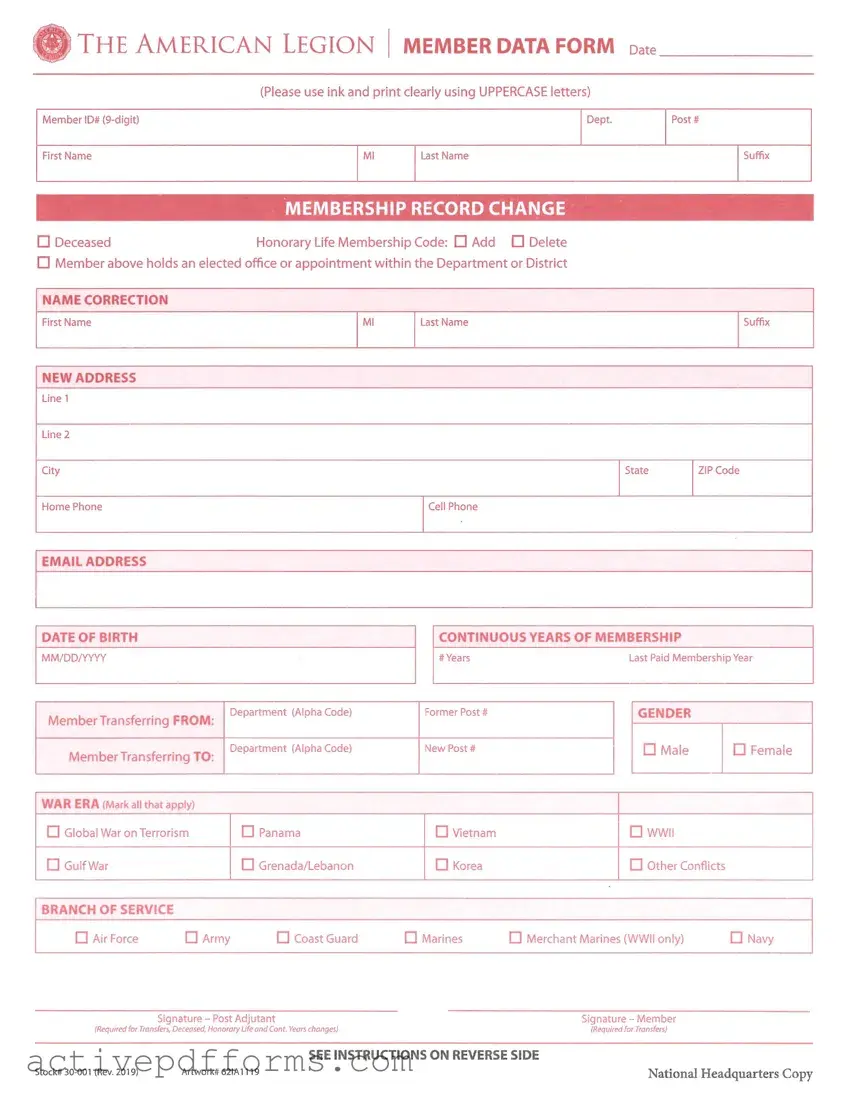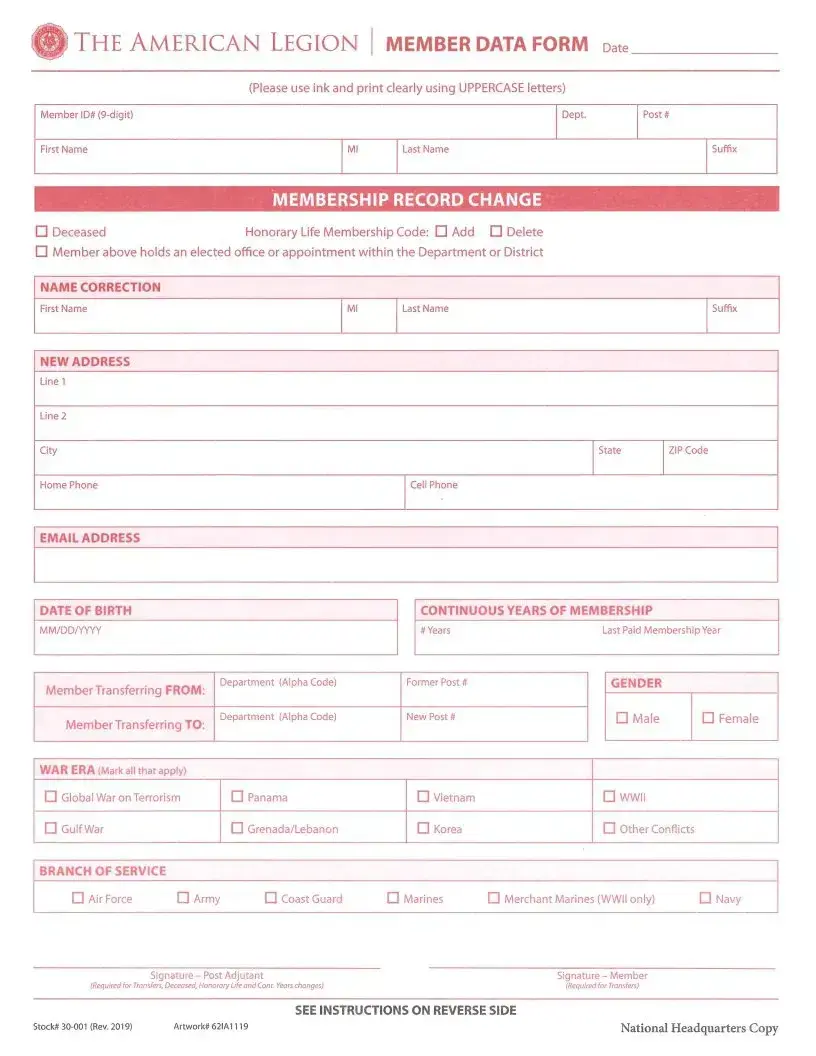The process of transferring membership within The American Legion, a key organization for U.S. veterans, is facilitated through the use of a specific document known as the American Legion Transfer form. This form serves as a critical tool in maintaining accurate membership records, allowing veterans to move their affiliation from one post to another seamlessly. It requires detailed member information including the Member ID, personal details such as name and date of birth, as well as service-related data like the war era served and branch of military. The form also addresses changes in membership status, for example, the granting of Honorary Life Membership and adjustments in continuous years of membership, highlighting the organization’s recognition of its members’ dedication and service. Notably, it mandates signatures from both the transferring member and the post adjutant, ensuring that the transfer is agreed upon and verified by the respective authorities within the organization. Designed to be filled out clearly in ink with uppercase letters, it emphasizes the importance of precision and clarity in administrative processes. Moreover, it includes fields for recording both old and new department and post numbers, thus acknowledging the diverse geographical presence of The American Legion and its commitment to accommodating its members regardless of their location. By streamlining the transfer process, the form plays an essential role in fostering a sense of continuity and community among veterans, ensuring they can access the support and camaraderie of The American Legion no matter where they choose to affiliate.

